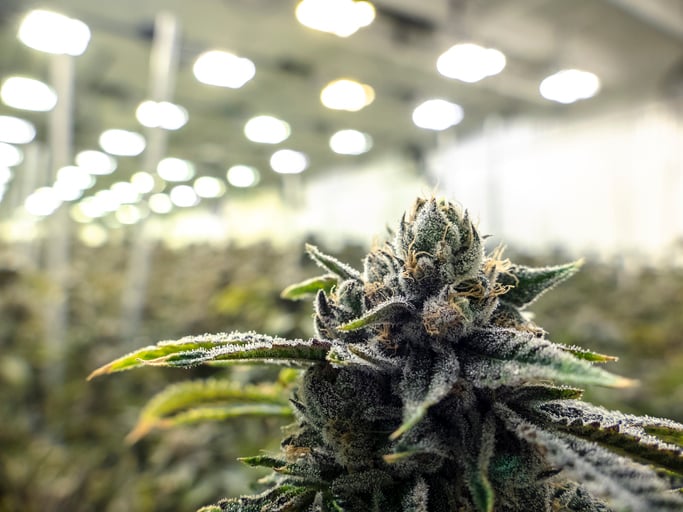Constellation Brands (STZ +0.36%) is learning the hard way that the business of selling cannabis presents challenges unheard of in the beer and wine industry. Immediately after pouring $4 billion into Canopy Growth (CGC 8.57%) last November, it became clear that selling licensed marijuana was going to be a lot harder than raising money to sell marijuana.
Constellation Brands received a 37% equity stake in Canopy Growth and the beverage company now shares four board members with the cannabis producer. That's enough clout to oust the person most responsible for accelerating losses that have pulled Canopy shares 23% lower since the beginning of legal adult-use marijuana sales in Canada. This was the right move for a long list of reasons, and these three were the most important.

Image source: Getty Images.
1. How much for what?
Bruce Linton was called many things since co-founding Canopy Growth in 2013, but a careful steward of capital wasn't one of them. Despite operations producing consistent losses, Linton oversaw plenty of questionable investments.
For example, Canopy recently handed Acreage Holdings (ACRGF +0.00%) $300 million for an option to buy the company for $3.4 billion -- with a catch. The United States needs to legalize the production and sale of cannabis before either company ceases to exist. Since this would wipe out Canopy's $3.5 billion cash cushion, the company will create lots of new shares to complete the transaction if necessary.
In 2018, Acreage reported operating expenses that reached a whopping $94 million. That was 345% more than top-line revenue recorded over the same period, which led to a $68.7 million operating loss last year.
2. A gross miscalculation
It doesn't matter how quickly an industry is growing, using money you don't have to overpay for businesses that bleed money is a recipe for disaster. Investors have been willing to look the other way as expenses mount thanks to rosy predictions from investment banks eager for more business from the growing industry.
For example, Stifel said the licensed cannabis market that racked up $8 billion in global sales last year will grow to $200 billion over the coming decade. Of course, this assumes that the illicit market simply evaporates on its own, which is clearly not the case.
Everyday investors are often swept up by investment bank estimates with wild caveats, but industry insiders should know better. Linton's purchases of everything that moved under the assumption the analysts were right are unforgivable.
Anybody who thought marketing licensed cannabis in the European Union or South America would be any easier than it is in Canada must be unfamiliar with the Netherlands and Spain. Despite heavy spending to enter international markets, sales outside of Canada during the first three months reached just $1.8 million Canadian dollars, which was even less than during the previous quarter.

Image source: Getty Images.
3. Commercial flop
Canopy isn't executing its plan to provide top-quality cannabis at a competitive price with any level of success. Its Tweed stores and cannabis brand are well known, but reported results suggest the company doesn't receive many repeat customers.
Recreational cannabis sales to consumers didn't begin until 17 days into the fourth quarter of 2018. During the first three months of 2019, sales to consumers rose just 1.6% compared to the previous, shortened quarter. At an annualized CA$46.7 million, Canopy Growth needs a big sales explosion just to break even. During the year ended March, its operations lost a whopping CA$577 million.
Now what?
Canopy Growth and its peers have complained about kinks in the supply chain, but the data says otherwise. Health Canada measured 393,110 kilogram equivalents of ready-for-sale inventory at the end of April, and another 421,035 kilograms of unfinished inventory.
Licensed producers are still waiting for a finalized set of rules before making edibles, beverages, and vaporizer cartridges later this year, but that doesn't explain rapidly growing inventories that are already large enough to theoretically meet the country's licensed cannabis demand for more than a year without producing another gram.
Cannabis has a shelf life limited to a couple of years under ideal conditions, and much less if exposed to heat and humidity. At the end of March, Canopy Growth has reported an inventory value that was 42% higher than it was just three months earlier. Unless the company's restructured management team can pull off a miracle, expect significant inventory writedowns by the end of 2019.
If you think the stock has fallen hard recently, bear in mind that Canopy Growth is still a $14.3 billion company that keeps reporting accelerating losses and has no clear path to sustainable profits. It's time to get off this ship before more investors realize it's headed for an iceberg at full speed.







